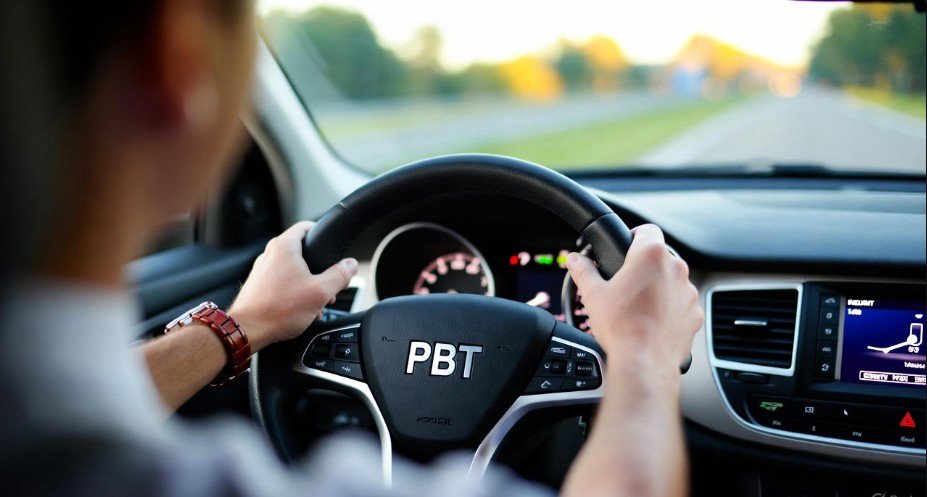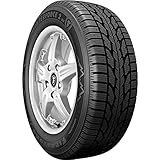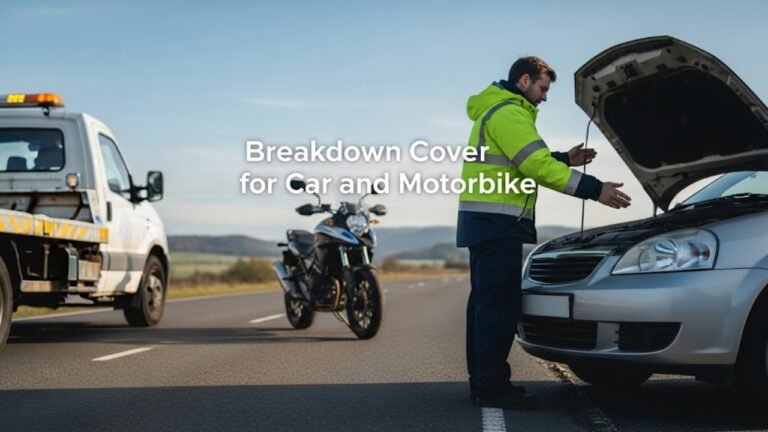Who Can Be in the Car With a Permit Driver? Unveiling the Rules!

Getting your driver’s permit is a huge milestone. It’s that thrilling moment when you finally feel a taste of freedom, the ability to go places on your own, and start learning the ropes of being a responsible driver. But along with the excitement comes responsibility. One of the most common questions teen drivers—and their parents—ask is: “Who can be in the car with a permit driver?”
Understanding the rules is not just a matter of following the law; it’s about safety, focus, and gaining the confidence needed to navigate the roads responsibly. In this guide, we’ll break down the rules, explore exceptions, share some real-world advice, and provide insights into how to make the most of your learning experience behind the wheel.
Understanding Permit Restrictions: Why They Exist

Before we talk about who is allowed in the car, it’s essential to understand why restrictions exist in the first place. Permit drivers are typically teenagers who are still learning how to drive safely. They lack experience, split-second judgment, and the ability to anticipate other drivers’ actions as seasoned drivers do.
Distractions are a major risk. A teen driver handling a new car while talking with friends or siblings can easily lose focus. By limiting who can be in the car, states aim to create a controlled, safe environment where permit drivers can concentrate solely on the road.
Think of it like this: you wouldn’t teach someone to swim in rough waters with too many people around. Permit driving is similar—a calm, controlled environment ensures the learner develops solid habits without unnecessary risk.
Each state has its own laws regarding permit restrictions, but there are common threads nationwide, which we’ll explore next.
Immediate Family Members: Your Learning Support System
One of the most universal rules across states is that immediate family members are usually allowed in the car with a permit driver. This includes parents, guardians, and siblings. Why? Because family members are considered responsible and familiar, which reduces potential distractions for the learner driver.
For instance, a parent in the passenger seat can calmly guide the teen, correct mistakes, and provide encouragement. Siblings, while sometimes chatty, are still considered safer than unrelated teen friends who may influence risky driving behavior.
It’s important to note that while family members are generally exempt from passenger limits, this doesn’t give a teen carte blanche. Even with siblings, loud arguments or distractions can interfere with focus. The goal is always a safe, supportive environment, allowing permit drivers to build confidence while learning essential driving skills.
Pro tip: Use family rides as mini-driving lessons. Ask a parent to provide constructive feedback instead of merely supervising—it makes the practice more effective.
Adult Supervision: The Legal Requirement
One of the most critical aspects of permit driving is having a licensed adult in the car at all times. This adult is usually required to be at least 21 years old and possess a valid driver’s license. Their presence is not just a formality—it’s a legal obligation and a safety necessity.
The supervising adult’s role is multi-fold: they ensure the teen follows traffic rules, guide them through complex driving scenarios, and help prevent potential mistakes from turning into accidents. Typically, the adult sits in the front passenger seat, ready to intervene if necessary.
In many states, failure to have a licensed adult can result in fines, license suspension, or other legal consequences. But beyond the law, think of the adult as your driving mentor—someone who provides real-time advice, helps you practice safe driving, and builds your confidence gradually.
Teen Passengers: The Big Restriction
One of the most debated rules among teens is the limitation on having other teen passengers. Most states restrict the number of friends or peers allowed in the car while driving with a permit. Usually, this limit is one or two teen passengers at most, if allowed at all.
The reason is simple: peer pressure and distractions. Teen passengers can unintentionally cause the driver to take risks, engage in unsafe maneuvers, or divert attention from the road. Studies show that young drivers with peers in the car are more likely to engage in risky behavior, increasing the chances of accidents.
Example scenario: Imagine a teen driving with a couple of friends who are joking, playing music loudly, or even nudging the driver. Even the most responsible teen might find it challenging to stay focused. That’s why laws are strict about teen passengers—your safety comes first.
Tip for teens: Focus on learning and perfecting driving skills before planning social rides. It’s better to be a confident, responsible driver than a distracted one.
Responsibilities of the Permit Driver
Being a permit driver comes with real responsibilities. You are not just learning to drive for yourself—you are also responsible for the safety of everyone in the car. This means avoiding distractions like loud music, phone use, or long conversations with passengers.
The road demands your full attention. Even small lapses in judgment can lead to accidents. A permit driver should always remember: every decision behind the wheel matters—not just for them, but for passengers, pedestrians, and other drivers.
Additionally, a permit driver must be proactive. That means understanding traffic rules, signaling properly, obeying speed limits, and practicing defensive driving. These habits formed early can last a lifetime, making the transition to a full driver’s license smoother and safer.
Common-Sense Guidelines Beyond the Law
Even if the law allows certain passengers, common sense is your best friend. If a passenger makes you nervous, distracts you, or makes you drive less cautiously, it’s okay to say no. Your safety and focus should always be your top priority.
For instance, if a sibling insists on sitting in the back and playing loud music while you’re still learning, it’s better to postpone the ride. Safety trumps rules—the goal is to cultivate confidence, skill, and good driving habits.
Parents and guardians often have additional rules beyond legal requirements. These personal guidelines can include limiting the number of passengers, requiring certain hours for driving, or restricting where you can drive. Always communicate openly with your family—they want to keep you safe, not spoil your fun.
Sample Table: Passenger Rules for Permit Drivers
| Passenger Type | Allowed? | Notes |
|---|---|---|
| Parent/Guardian | ✅ Yes | Always recommended for guidance and supervision |
| Sibling | ✅ Yes | Usually allowed; keep distractions minimal |
| Teen Friends | ⚠ Limited/No | Only one or two in some states; mostly discouraged |
| Licensed Adult (21+) | ✅ Yes | Required; must sit in front passenger seat |
| Non-family Adults | ⚠ Case by case | Check state laws; often discouraged unless supervising |
This table is a handy reference to quickly understand the basic rules, but remember: each state has variations, so always double-check your DMV guidelines.
Building Safe Driving Habits Early
Ultimately, who you allow in your car during the permit stage impacts your growth as a driver. By adhering to these rules, avoiding distractions, and respecting legal and parental guidelines, you develop essential habits: focus, patience, responsibility, and risk assessment.
Think of this stage as training wheels for your driving career. The passengers you choose—or don’t choose—can either support or hinder your development. By creating a controlled environment, you not only follow the law but also set yourself up for long-term success as a confident, responsible driver.
Parental Guidelines: Setting Expectations for Permit Drivers
Parents play a crucial role during the permit stage. Beyond legal requirements, parents often establish rules to ensure safe driving practices. These may include limiting driving to daylight hours, avoiding highways initially, and restricting passenger numbers.
For example, a parent might allow a teen to drive only with one sibling or a licensed adult, even if the law permits more passengers. This guidance helps reduce distractions and builds confidence. Communication is key: discuss expectations openly, set clear rules, and review driving sessions together.
Parents can also help enforce safe habits, like checking mirrors regularly, using seat belts, and maintaining proper speed. Treat these guidelines as a support system rather than a restriction—they’re designed to help you become a responsible, competent driver.
Real-Life Examples: Learning From Experience
Let’s consider a few scenarios that highlight why passenger restrictions are vital:
-
Scenario 1: Sarah, a 16-year-old permit driver, took her two friends for a quick drive. They chatted, laughed, and played loud music. She missed a stop sign, narrowly avoiding a collision. The distraction from teen passengers almost caused an accident.
-
Scenario 2: Alex drove with his father and younger brother. His father provided guidance on lane changes and traffic rules. Alex made mistakes but received immediate corrections in a safe, controlled environment.
These examples illustrate the difference between safe learning and risky distractions. Teen passengers can unintentionally increase stress and risk, while family or licensed adult supervision provides constructive support.
Additional Tips for Permit Drivers
To make the most of your permit stage and follow the rules effectively, consider these practical tips:
-
Avoid Distractions: No phones, loud music, or gaming devices. Even texting for a split second can be dangerous.
-
Plan Your Route: Stick to familiar roads with low traffic for practice. Avoid busy highways until you’re more confident.
-
Track Your Hours: Many states require a minimum number of supervised driving hours before taking a road test. Keep a log to ensure compliance.
-
Gradual Learning: Start with short trips and increase complexity slowly—night driving, highway merging, and busy intersections can come later.
-
Mind Passengers: Keep only approved passengers in the car. One license adult and immediate family are safest.
These strategies help you build confidence and competence safely, making the transition to a full driver’s license smoother and less stressful.
FAQs: Who Can Be in the Car With a Permit Driver?
Here are the most commonly asked questions regarding permit driver passenger rules:
1. Can a permit driver drive alone?
No. Permit drivers must always have a licensed adult in the passenger seat. Driving alone violates state law and can result in fines or penalties.
2. Who can be in the car with a permit driver?
Immediate family members and a licensed adult (21+) are typically allowed. Rules may vary slightly by state, so check local DMV guidelines.
3. Can you drive with friends as a permit driver?
Generally, friends are not allowed unless a licensed adult accompanies the driver. The restriction reduces distractions and risk.
4. Are siblings allowed in the car with a permit driver?
Yes, siblings can ride along, especially if a licensed adult is present. It’s safer than having unrelated teens as passengers.
5. What about non-family adults?
Some states allow non-family adults to supervise, but it’s best to confirm with your DMV. They must be licensed and typically over 21.
6. Are there exceptions to passenger rules?
Exceptions are rare and usually limited to immediate family members. Always follow both legal requirements and parental guidelines.
7. What happens if rules are broken?
Breaking passenger rules can lead to fines, permit suspension, or delayed eligibility for a full license. Safety should always come first.
The Importance of Building Confidence Before Independence
The permit stage is not just about learning the mechanics of driving—it’s about developing judgment, focus, and confidence. By following passenger restrictions, practicing regularly, and receiving guidance from responsible adults, you gradually gain the skills to drive safely on your own.
Consider it a stepwise journey: starting with supervised drives, gradually handling more challenging situations, and eventually earning your full license. Each safe ride and mindful decision builds experience, reduces anxiety, and reinforces safe habits.
Bullet Points: Key Takeaways for Permit Drivers
-
Always have a licensed adult (21+) in the car.
-
Immediate family members are usually allowed passengers.
-
Limit teen passengers to reduce distractions.
-
Follow both DMV rules and parental guidelines.
-
Avoid distractions like phones, loud music, or horseplay.
-
Gradually increase driving complexity for safe learning.
-
Keep a log of supervised driving hours required by your state.
These simple points are practical, easy to remember, and help ensure a safe and law-abiding driving experience.
Cultural Insights and Teen Perspectives
In many households, the permit stage can be a rite of passage. Teenagers often see it as freedom, while parents view it as a responsibility. This difference in perspective can create tension. However, open communication and mutual understanding can transform this period into a positive learning experience.
For example, some teens may resist restrictions on friends in the car. Parents can explain that peer distractions increase accident risk, showing real-world statistics or sharing personal stories. By approaching the conversation with empathy, both sides can appreciate the reasoning behind the rules.
Summary: Staying Safe and Legal
To recap:
-
Who can be in the car with a permit driver? Immediate family and a licensed adult. Teen passengers are usually limited.
-
Why the restrictions? Reduce distractions, prevent risky behavior, and create a controlled learning environment.
-
Parental role: Enforce additional guidelines for safety and habit building.
-
Permit driver responsibility: Focus, follow the law, and build driving confidence gradually.
Following these rules ensures legal compliance, personal safety, and skill development. Driving is a privilege, not just a right—respecting passenger restrictions is a key part of earning that privilege responsibly.
Final Thoughts
Driving for the first time is an exciting experience, but it comes with serious responsibility. Knowing who can be in the car with a permit driver, adhering to the rules, and practicing safe driving habits are crucial steps in becoming a competent, confident driver.
Think of the permit stage as training wheels for your independence. By respecting the law, following parental guidance, and prioritizing safety, you set yourself up for success and a lifetime of responsible driving.
Remember, it’s not just about getting to your destination—it’s about arriving safely, every single time.






